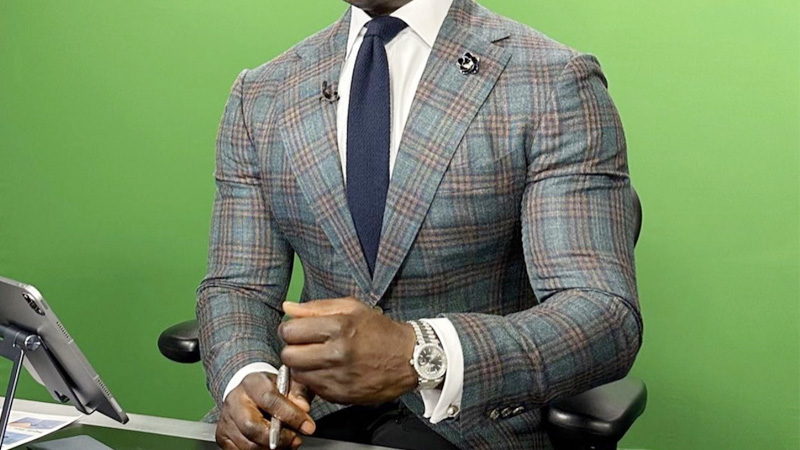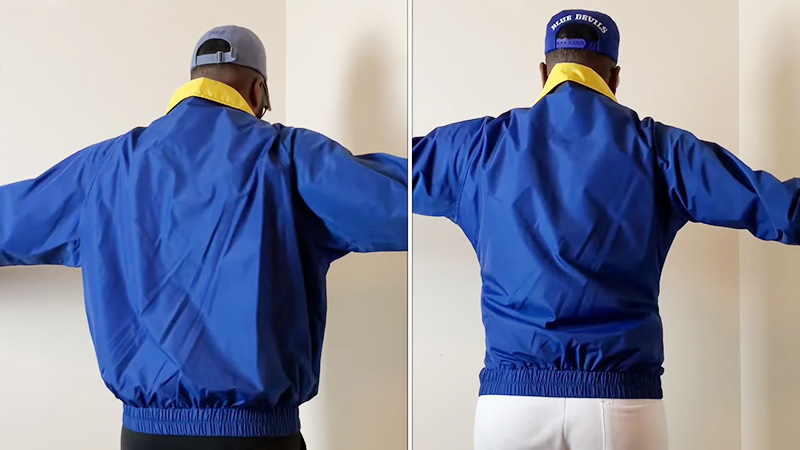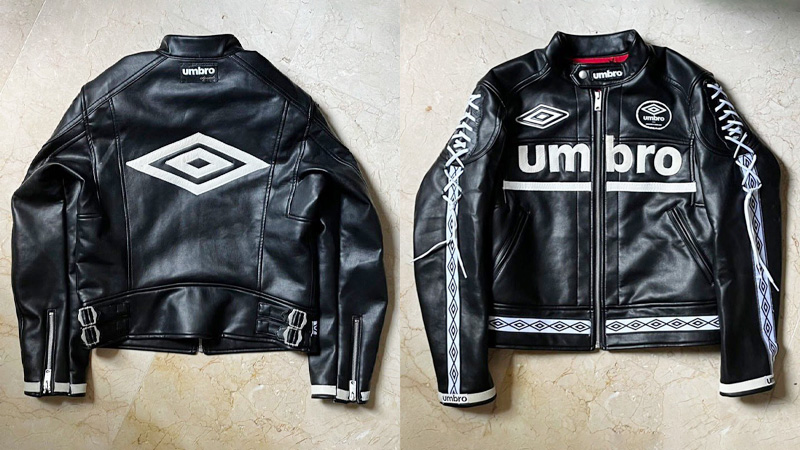Ensuring your jacket fits perfectly is a vital step in elevating your style and comfort. A well-fitted jacket not only enhances your overall appearance but also boosts your confidence.
However, achieving that ideal fit doesn’t always require a trip to the tailor. In this guide, we’ll explore various techniques and creative solutions to make your jacket fit better.
Whether you’re dealing with a slightly oversized blazer, a snug winter coat, or any jacket in between, we’ll provide you with actionable tips and alternatives to sewing alterations.
From clever layering tricks to stylish accessories, discover how to tailor your jacket to your unique style and body shape.

How to Make a Jacket Fit Better?
If you have a jacket that doesn’t fit quite right, whether it’s too big or too small, there are several ways to make it fit better without the need for professional tailoring.
With a bit of patience and some basic sewing skills, you can adjust your jacket to achieve a more flattering and comfortable fit.
Here’s a step-by-step guide on how to make a jacket fit better:
Materials You’ll Need
- The Jacket.
- Needle and Thread.
- Pins.
- Seam Ripper.
- Iron and Ironing Board
- Measuring Tape.
- Chalk or Fabric Marker
- Scissors
Steps to Make a Jacket Fit Better:
Identify Fit Issues
Begin by trying on the jacket and identifying the specific fit issues. Pay attention to areas like the shoulders, sleeves, waist, and overall length. Note whether the jacket is too loose or too tight in these areas.
Inside-Out
Put the jacket on inside-out. This allows you to easily access the seams and make alterations while ensuring the right side of the fabric remains unaffected.
Pin and Mark
Use pins to mark the areas where you want to make adjustments. For example, if the waist is too loose, pinch the excess fabric and pin it to create a snugger fit. Use chalk or a fabric marker to draw lines where you intend to sew.
Removing Excess Fabric
If the jacket is too large, carefully cut along the chalk or marker lines, leaving a seam allowance of about 1/2 inch.
Be cautious when cutting to ensure a straight and even line. Always cut symmetrically on both sides for balanced adjustments.
Sew New Seams
Thread your needle and start sewing along the lines you marked. If the jacket has lining, take extra care not to sew it to the outer fabric. You can choose between a simple running stitch or a backstitch for added durability.
Adjusting Sleeves
If the sleeves are too long, fold the excess fabric inward and sew it in place to create a neat hem. Ensure that both sleeves are the same length for a balanced look.
Reshaping Shoulders
To make the shoulders fit better, sew a new seam closer to the neckline. This may require some adjustments to the sleeves as well to maintain the proper fit and balance.
Taper the Waist
If the waist is too loose, take in the side seams gradually. Start from the armpits and taper down to the waist for a more fitted appearance. Once again, avoid sewing the lining to the outer fabric.
Try It On and Fine-Tune
After making these alterations, try the jacket on again to ensure it fits better. Make any necessary adjustments by re-sewing or trimming excess fabric. Continually check for comfort and fit as you work.
Press and Finish
Once you’re satisfied with the fit, use an iron to press the seams. This step helps make the alterations look neat and flat. Trim any loose threads and tidy up the alterations.
Replace Buttons and Fasteners
If your jacket had buttons or other fasteners that were affected by the alterations, reposition them to match the new fit. Ensure they align properly and securely.
Alternative Approaches to Make Your Jacket Fit Better

If you’re looking for alternative ways to make your jacket fit better without altering the garment itself through sewing or tailoring, there are several creative solutions you can consider.
These methods can help improve the fit, enhance comfort, and update the style of your jacket.
Here are some alternative approaches:
Layering
Layering is an excellent way to make a slightly oversized or loose-fitting jacket work for you.
Add bulkier clothing underneath, such as sweaters, hoodies, or vests, to fill out the space and create a snugger fit. This not only adds warmth but also transforms the jacket’s appearance.
Cinching with a Belt
For jackets with a little extra room around the waist, try cinching them with a stylish belt.
This simple accessory can instantly define your waist and give a loose jacket a more tailored look. It’s a versatile option that works well with blazers and lightweight jackets.
Shoulder Pads or Enhancers
To address issues with shoulder fit, consider adding shoulder pads or enhancers. These can create structure and give the shoulders a broader appearance, making the jacket fit better and look more balanced.
Sleeve Roll or Push-Up
If the sleeves of your jacket are slightly long or loose, you can achieve a more tailored look by rolling or pushing up the sleeves. This not only shortens the sleeves but also adds a touch of casual style to your outfit.
Tailor’s Tape
Tailor’s tape is a double-sided adhesive tape that can be used to temporarily adjust the fit of your jacket. You can use it to secure folds or tuck in the fabric discreetly. It’s a quick and removable solution for minor fit issues.
Safety Pins or Fashion Tape
Safety pins and fashion tape can help secure areas of the jacket that need temporary adjustments.
Use them to create gathers, pinches, or folds to achieve a better fit. Be sure to place them strategically to maintain a balanced appearance.
Use Accessorize to Distract
Sometimes, a well-chosen accessory can divert attention from fit issues. Wear a statement scarf, bold necklace, or eye-catching brooch to draw attention away from any fit imperfections.
How Can You Care For Your Jacket to Make It Last Longer?

Caring for your jacket properly is essential to ensure it lasts longer and remains in good condition.
Whether it’s a casual jacket, a formal blazer, or a winter coat, here are some tips on how to care for your jacket to extend its lifespan:
Read the Care Label
The care label is your jacket’s user manual. It provides valuable information about the fabric, cleaning instructions, and care guidelines. Follow these instructions closely to avoid damaging your jacket.
Spot Clean as Needed
Promptly address minor stains or spills by spot cleaning. To do this, dampen a clean cloth with lukewarm water and a mild detergent.
Gently blot the stained area, taking care not to rub, as this can spread the stain or damage delicate fabrics.
Regularly Brush and Lint Roll
Invest in a lint roller or a soft-bristle brush specifically designed for clothing. Regularly pass the brush or roller over your jacket to remove dust, lint, and pet hair. This simple step keeps your jacket looking clean and fresh.
Store Properly
Use a sturdy, padded hanger to hang your jacket. Avoid wire hangers, as they can distort the shoulders. When hanging, button or zip up the jacket to maintain its shape.
Use Garment Bags
Garment bags made of breathable fabric are ideal for long-term storage. They protect your jacket from dust, insects, and moisture while allowing air circulation. Choose a clear or labeled garment bag for easy identification.
Avoid Direct Sunlight and Heat
Prolonged exposure to sunlight can fade the color of your jacket and weaken the fabric over time. Store it in a cool, dry place away from direct sunlight, radiators, and other heat sources.
Rotate Your Jackets
If you have a collection of jackets, rotate them regularly to distribute wear evenly. This prevents one jacket from becoming excessively worn while others are left untouched.
Waterproof and Weatherproof
Outdoor jackets, like raincoats and winter coats, benefit from occasional waterproofing treatments.
Follow the manufacturer’s instructions or consult with a professional to apply a waterproof spray or wax. This enhances water resistance and prolongs the jacket’s life.
Follow Washing Instructions
If your jacket is machine washable, use a mild detergent and follow the care label’s washing instructions.
Close all zippers and buttons to prevent snagging. Delicate or dry-clean-only jackets should be taken to a professional cleaner to ensure their longevity.
Repair Minor Damage Promptly
Don’t ignore loose buttons, loose threads, or minor tears. Address these issues promptly by sewing on buttons or patching small tears.
Timely repairs can prevent further damage and extend your jacket’s lifespan.
Down Jackets and Coats
For down-filled jackets and coats, follow the manufacturer’s care instructions closely.
Washing and drying down-filled items can be delicate tasks. Properly fluff and shake the jacket after washing to redistribute the down evenly.
Leather and Suede Jackets
Leather and suede jackets require specialized care. Use leather cleaners and conditioners to maintain their suppleness and prevent cracking.
Store them in a cool, dry place, away from moisture and direct sunlight.
Fur-Trimmed Jackets
Fur-trimmed jackets need special care as well. Avoid crushing or matting the fur, and hang the jacket carefully.
Store it in a cool, dry place when not in use to preserve the fur’s quality and appearance.
FAQs
Yes, you can! Creative solutions like layering, cinching with a belt, and using accessories can improve the fit without sewing.
Consider adding shoulder pads or enhancers for structure and better fit. Tailor’s tape and safety pins can also help.
Absolutely. Tailor’s tape, fashion tape, and accessories like belts or vests can provide temporary adjustments.
Yes, professional tailors can make precise alterations to ensure a perfect fit, addressing various issues.
Yes, layering, accessorizing, and other non-invasive methods offer temporary or semi-permanent solutions for improved jacket fit.
To Wrap Up
In the quest for the perfect fit, we’ve delved into a range of techniques and creative solutions to make your jacket fit better.
From quick fixes to innovative styling tricks, you now have an array of options at your disposal.
Remember, a well-fitting jacket not only enhances your appearance but also your confidence and comfort.
Whether you’re aiming to redefine the silhouette, adjust the shoulders, or simply add a touch of personal flair, there’s a solution for every fit issue.
By understanding these strategies, you can confidently transform your jackets, ensuring they not only complement your style but also stay a wardrobe favorite for years to come.
Leave a Reply